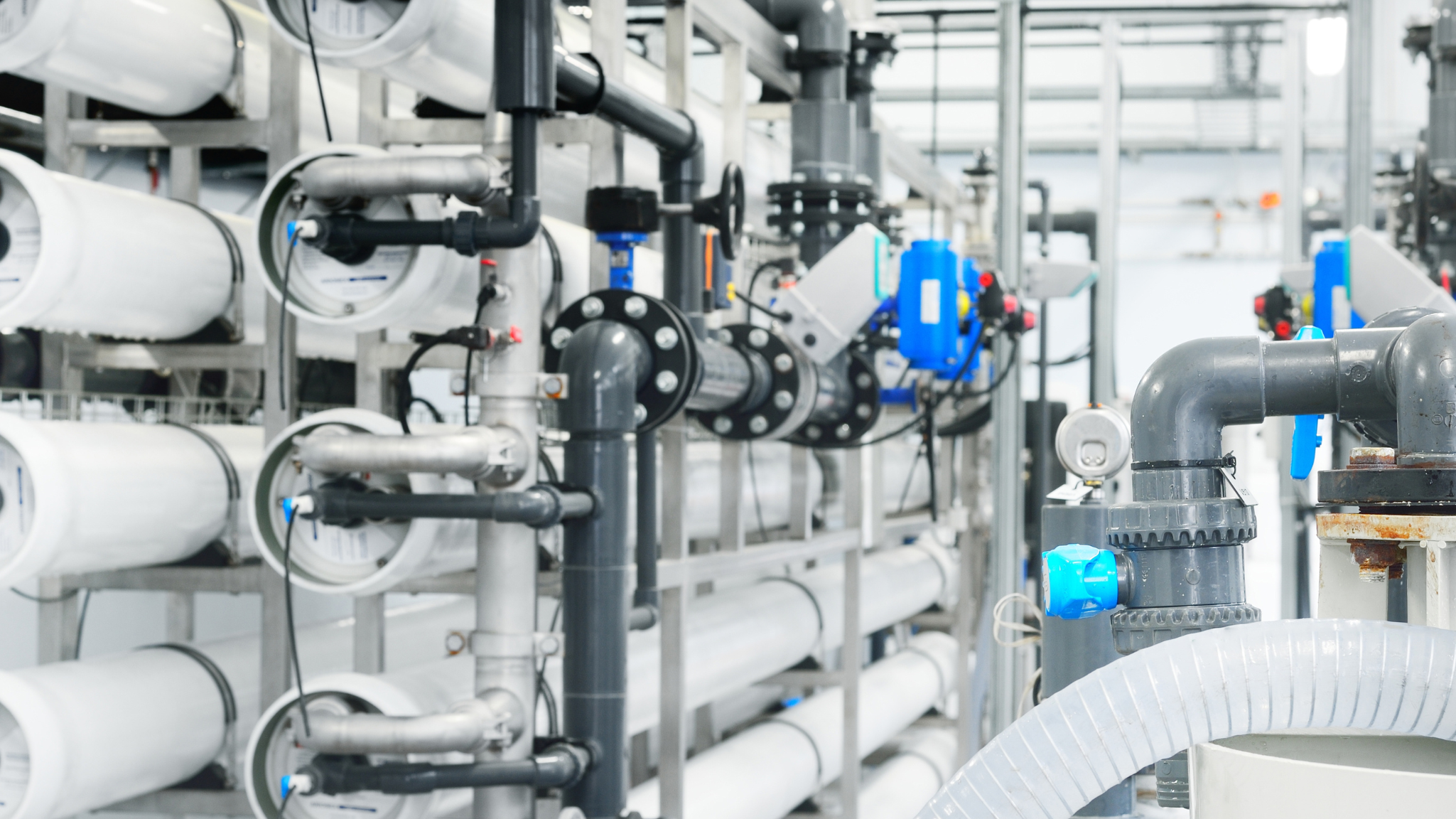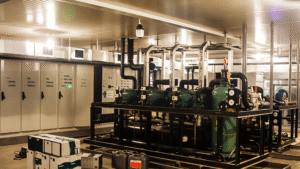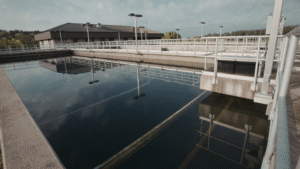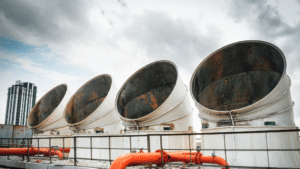Reverse osmosis (RO) has become one of the most reliable methods for producing high-quality water in industrial facilities. Across regions like Pennsylvania and Ohio, where industries such as manufacturing, food processing, and power generation depend on consistent water quality, RO systems play a critical role in day-to-day operations. These systems are designed to remove dissolved solids, reduce contaminants, and maintain efficiency in a wide range of applications.
Yet, like any filtration technology, membrane systems are not immune to performance challenges. Over time, they accumulate fouling from scales, organic matter, and suspended particles that clog the membrane surface and restrict flow. Left unmanaged, this fouling drives up energy costs, increases maintenance needs, and shortens the lifespan of valuable equipment.
This is where membrane cleaning becomes essential. With the right cleaning procedures and chemical compounds, operators can restore RO system performance, extend membrane life, and protect downstream assets. For facilities that rely on every gallon of treated water, proper membrane care is not optional — it is the foundation for reliable, cost-effective operation. If that sounds like what you need, this article is for you.
Understanding Membrane Fouling and Its Impact
Membrane fouling is the leading cause of declining performance in reverse osmosis systems. When contaminants accumulate on the membrane surface, they restrict water flow, increase operating pressure, and degrade overall system efficiency. For industrial operators, this means higher energy consumption, more frequent maintenance, and potential disruptions to production.
Common Types of Fouling
- Scaling – Deposits of calcium carbonate, silica, and other minerals form hard layers that block feed flow and reduce membrane function.
- Organic fouling – Natural organics, oils, and biological matter attach to membranes, lowering throughput and compromising water quality.
- Biological growth – Microorganisms colonize the membrane, leading to biofilm development that is difficult to remove without targeted cleaning compounds.
- Heavy metals – Iron, manganese, and other metals can precipitate on the membrane surface, creating stubborn deposits.
- Suspended particles – Silt and other fine matter physically block flow channels, reducing effectiveness across the system.
Operational Consequences
- Reduced feed flow and permeate output – Facilities must push more pressure through the system to achieve the same volume of treated water.
- Increased energy costs – Higher operating pressures translate directly into higher electricity demand.
- Decline in water quality – Contaminants that bypass fouled membranes reduce the reliability of the treated water, impacting industrial processes and even food and health-related applications.
- Shortened membrane life – Frequent fouling accelerates wear, forcing premature membrane replacement and raising long-term costs.
For industries in Pennsylvania and Ohio, where RO systems often run continuously to support power plants, food operations, and municipal water treatment, the consequences of untreated fouling ripple across operations. Recognizing and addressing these issues early is the first step toward protecting membrane performance and ensuring reliable system operation.
Read more on our blog: Reverse Osmosis Membrane Anti-Scalants: How They Work for Cleaner Water
Membrane Cleaning Chemicals: Categories and Functions
Not all fouling is created equal, and the choice of cleaning chemistry depends on the type of deposit affecting the RO membrane. Selecting the right membrane chemicals is critical for both the effectiveness of the cleaning process and the long-term protection of the system.
Alkaline Cleaners (High pH)
Alkaline cleaning compounds are designed to break down organic fouling and biofilm. They work by saponifying oils, dispersing natural organics, and removing microbial debris. These cleaners are especially effective when membranes suffer from biological activity or organic contamination introduced through feed flow.
- Applications: Removing organics, oils, and biofilms.
- Key benefit: Restores flow and improves water quality by targeting soft, sticky deposits.
Acid Cleaners (Low pH)
Acid-based cleaners are formulated to dissolve mineral scales and inorganic deposits. Carbonates, sulfates, and metal precipitates can be effectively removed with these solutions, which restore membrane permeability and reduce operating pressure.
- Applications: Dissolving scales such as calcium carbonate, iron, and manganese.
- Key benefit: Protects against scaling damage and extends membrane life.
Specialized Cleaning Compounds
In some cases, blended cleaning compounds are required to tackle complex foulants. These formulations may include surfactants to wet and loosen deposits, dispersants to prevent re-deposition, and chelating agents to bind stubborn metals.
- Applications: Mixed fouling situations where multiple contaminants are present.
- Key benefit: Ensures complete cleaning and safeguards membrane performance across diverse operating conditions.
Role of Biocides
While not part of routine membrane cleaning, biocides are often used in parallel to control microbial growth before it becomes biofilm. Proper integration of biocides with cleaning procedures helps reduce cleaning frequency and optimize system operation.
By using the correct chemistry at the right time, operators can maximize the return on cleaning efforts, restore RO system performance, and extend the service life of their investment.
Membrane Cleaning Procedures & Best Practices
Successful membrane cleaning is more than just selecting the right chemicals. It requires a structured approach that matches the foulant type, applies the proper procedures, and ensures complete removal of deposits. A well-executed cleaning restores membrane performance, protects water quality, and helps avoid premature replacement.
1. Determine Fouling Type
- Perform system diagnostics to identify whether fouling is caused by scales, organics, biofilm, or metals.
- Use system pressure data, feed flow decline, and water quality results as indicators.
- Proper diagnosis ensures that the correct cleaning compounds and cleaning equipment are selected.
2. Prepare the Cleaning Solution
- Mix the appropriate membrane chemicals in a tank with clean water, adjusting pH to the required range (low pH for scale, high pH for organics).
- Ensure the solution is at the correct temperature and concentration for maximum effectiveness.
3. Circulate the Cleaning Solution
- Pump the cleaning solution through the RO system at low pressure to protect the membranes.
- Allow the solution to fill and recirculate for the recommended time, ensuring contact with all membrane surfaces.
- Alternate flow direction when possible to dislodge contaminants.
4. Soak and Drain
- Allow the membranes to soak, giving the cleaning solution time to dissolve deposits.
- Drain the solution completely to remove foulants and chemicals.
5. Rinse and Return to Service
- Flush the system thoroughly with clean water to remove residual cleaning compounds.
- Verify that system parameters such as pressure, flow, and water quality return to acceptable levels.
Best Practice Guidelines
- Frequency: Cleaning should be performed before performance declines by more than 10–15% in pressure or flow.
- Professional application: Work with trained service providers to ensure procedures are correctly performed and membranes are not damaged.
- Optimize maintenance: Combine regular monitoring with scheduled cleanings to extend membrane life and avoid emergency shutdowns.
When cleaning procedures are implemented properly, facilities can reduce operating costs, improve uptime, and extend the service intervals of their RO systems.
Benefits of Effective Membrane Cleaning
Routine and properly executed membrane cleaning delivers measurable advantages for facilities that rely on reverse osmosis systems. Beyond simply restoring flow, it safeguards long-term reliability and efficiency across operations.
Restores Membrane Performance
Cleaning removes scales, organics, and other deposits that block the membrane surface, restoring normal feed flow and permeate output. Operators notice lower pressure requirements, improved throughput, and stable water quality.
Extends Membrane Life
By reducing the stress caused by fouling and high operating pressures, regular cleaning extends membrane life. This reduces the frequency of costly replacements and helps businesses optimize return on investment.
Improves Water Quality
Clean membranes consistently remove dissolved solids and contaminants, ensuring water quality that meets process, food, and health standards. Reliable water quality protects equipment and safeguards sensitive operations.
Reduces Operating Costs
Preventive cleaning lowers energy costs, minimizes downtime, and reduces maintenance frequency. These savings compound over the long term, improving both the operation and financial performance of the facility.
Supports Business Continuity
For industries in Pennsylvania and Ohio where water quality underpins critical manufacturing, power, and municipal systems, effective cleaning helps ensure uninterrupted service. Membrane care is not just a maintenance task but a strategic investment in reliability.
ETI’s Role in Membrane Cleaning Chemicals
At Eastern Technologies, Inc. (ETI), supporting water treatment professionals goes beyond supplying chemicals — it’s about delivering complete solutions for long-term system reliability. With nearly four decades of experience, ETI provides an extensive line of membrane treatments designed to combat fouling, corrosion, and microbiological growth in membrane systems.
Even when preventive antiscalants and biocides are applied, fouling from inorganic impurities, biological matter, suspended solids, and metal oxides is inevitable over time. These issues lead to reduced permeate flow, increased differential pressure, and declining membrane performance. ETI’s proven, cost-effective membrane cleaners are formulated to restore system function and extend the operating life of RO membranes.
What sets ETI apart is the combination of technical expertise and customer support:
- ANSI/NSF Standard 60 approved membrane anti-scalants and US-EPA approved biocides for non-potable systems.
- A wide range of membrane cleaning chemicals and formulations to meet diverse fouling challenges.
- Access to private-labeled Data Sheets, Application Guides, and SDSs for service providers.
- Technical training and laboratory support for better product knowledge, water chemistry insights, and plant optimization.
- Flexible packaging options and direct shipment of private-labeled products across the U.S. and globally.
With hands-on troubleshooting and tailored product recommendations, ETI acts as a trusted partner to help operators maintain performance and minimize downtime.
Learn more about ETI’s Membrane Treatments.
Powering Long-Term RO Performance with the Right Membrane Cleaning Strategy
The success of any reverse osmosis system depends on how well membranes are cared for. Routine membrane cleaning not only restores efficiency but also prevents costly downtime, protects water quality, and extends the life of critical equipment. By using the right cleaning compounds, following best practices, and scheduling maintenance at the right frequency, operators can keep their systems running at peak performance.
For industries across Pennsylvania and Ohio — from food and beverage operations to power plants and municipal water facilities — reliable water treatment is essential. ETI understands these challenges and provides the chemistry, expertise, and hands-on support needed to optimize results.
Ready to restore your RO system performance? Contact Eastern Technologies, Inc. today to discuss customized membrane cleaning programs, technical support, and private-label solutions tailored for your operation.
Frequently Asked Questions (FAQs)
What is the role of osmosis in reverse osmosis membrane cleaning?
Osmosis is the natural movement of water across a semi-permeable barrier. In reverse osmosis systems, that process is inverted under pressure to filter contaminants. When membranes become fouled, they cannot function as intended, which is why membrane cleaning is essential to restore proper osmosis and system efficiency.
How do filters and RO membranes differ in function?
Standard filters remove larger particles and suspended solids from feed water, but they cannot eliminate dissolved salts and organics. The RO membrane goes further, acting as a molecular barrier that ensures consistent water quality. Cleaning procedures are designed to maintain this advanced filtering capability over time.
At what stages of an RO system is membrane cleaning most effective?
Cleaning can benefit membranes across multiple stages of a treatment train. Pre-filters reduce the fouling load, but once the RO stages begin to lose performance, targeted cleaning with the right chemicals restores both the effectiveness and flow capacity of the system.
Does cleaning depend on how recently the system was installed?
Yes. Even after a new install, foulants such as fine particles, line debris, or improperly pretreated feed water can quickly accumulate on the membrane surface. Early monitoring helps determine if cleaning is needed to stabilize performance.
What is the nature of common membrane foulants?
The nature of foulants varies. Scaling comes from dissolved minerals, organic fouling from natural matter and biofilm, and metals such as iron or manganese from the feed stream. Identifying the foulant type determines the choice of cleaning compounds for the best outcome.





